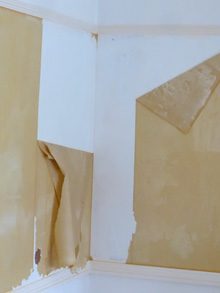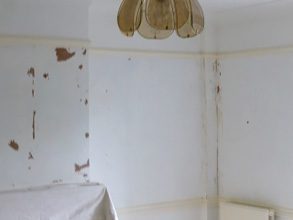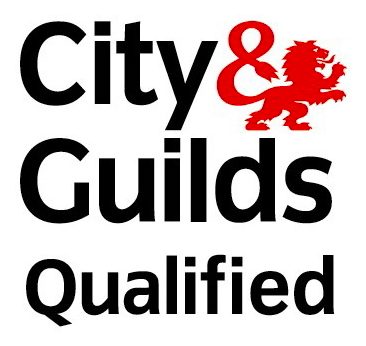Although stripping old wallpapers can be messy and will require some physical effort, it doesn’t have to be made harder by going about it the wrong way. If you use these simple methods it can be carried out relatively quickly and cleanly.
 The first thing to do is to see if the paper has a peel able outer face. Some papers are designed to have a peel able outer layer (all vinyls) to ease their removal. While others which though not actually designed to be peeled can be if you know how to and are careful with them.
The first thing to do is to see if the paper has a peel able outer face. Some papers are designed to have a peel able outer layer (all vinyls) to ease their removal. While others which though not actually designed to be peeled can be if you know how to and are careful with them.
Whatever you do don’t just get a Stanley knife or sharp scraper and start cutting crisscross cuts in the surface of the paper in the misguided belief that this is going to allow enough water through the paper to strip it. All this is going to achieve is to cut up the surface into small sections making it impossible to strip large areas of the outer layer in one go. Also this can cut lines into the plaster below which you may have to make good later if you do not plan to re-papering it.
Gently peel up a corner of the face paper low down on the skirting board and in-between the seams, if it’s a vinyl it will peel right off and in one whole piece as long as you take it steady. If it is not a vinyl it might not peel at all in which case try wetting the paper and then try peeling it again, if that doesn’t work you will have to strip it as described below. Even though it’s not a vinyl it might still peel, but just in smaller strips, but if you wet the paper they might come off in larger pieces.
If the paper has peeled or partly so, you will be left with an ivory backing paper which will strip easily when wetted. If no face paper has come off and the surface is shiny and waterproof the paper is probably a washable paper which will require wire brushing hard to scuff it up and so breaking the waterproof coating. This will allow water to go through enabling the paper to be stripped by wetting it.
 Normal sponge able and unpainted chip-papers will readily soak up water and will strip easily once wetted. Chip-paper if painted will need opening up as will washable papers to let the water through, do this again either by wire brushing if a really stubborn paper or normally you can get away with knocking off the woodchips with a scraper – that’s usually enough to let the water through as long as you soak it well.
Normal sponge able and unpainted chip-papers will readily soak up water and will strip easily once wetted. Chip-paper if painted will need opening up as will washable papers to let the water through, do this again either by wire brushing if a really stubborn paper or normally you can get away with knocking off the woodchips with a scraper – that’s usually enough to let the water through as long as you soak it well.
Now onto soaking the paper, don’t soak it with a sponge or rag as so many people do, this won’t force the water through the papers surface into the glue below. Use an old worn out large natural bristle brush for this (not nylon). The short bristles of the brush will force the water through the paper 10 times better than a sponge, which just dampens the top only. An old 5inch emulsion brush is perfect for this. Also don’t use plain cold water, use hot or warm water with some detergent added in it, hot water is always better than cold as it penetrates better and the detergents helps break down the papers surface tension also improving penetration. Believe me it works!
The trick is to ‘let the water do the work’ in other words shut all doors and windows to stop the paper drying out straight away, soak the paper well, even twice if required, then leave it to soak in for a good 5 to 10 minutes giving the water plenty of time to soak in thoroughly and wet the glue below. Then you should find the paper will easily scrape off or if you’re lucky just pull off the wall in large sheets without much scraping being required and so keeping the mess to a minimum.
Remember to wash off any old glue from the wall below ( see Mark’s tips on washing down ) to discourage mould growth (mould loves old glue) and stops new paint adhering causing peeling later on if over painting and not re-papering. Remember to make sure to switch off the electric to the sockets and light switches in the room and keep the water from getting into them.

